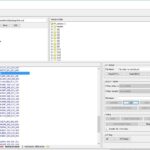Experiencing a sudden warning light on your dashboard accompanied by the message “ENGINE POWER IS REDUCED” can be a concerning moment for any driver. It often appears unexpectedly, disrupting your journey and causing immediate worry.
If you’ve encountered this situation, know that you’re not alone. Reduced engine power is a relatively common issue faced by many vehicle owners. While it’s undoubtedly frustrating, understanding the basics of what this warning signifies and how to address it can provide reassurance and help you get back on the road quickly, with expert advice from your friends at Christian Brothers Automotive.
Decoding “Engine Power Is Reduced”: What Does It Really Mean?
In automotive diagnostics, the “engine power reduced” alert is a crucial indicator from your vehicle’s onboard computer system. This message signals that the system has detected a malfunction, prompting the activation of a safety mechanism known as “limp mode.”
Limp mode is designed to protect your engine from further damage by limiting its power and performance. When activated, you’ll notice a significant decrease in your vehicle’s acceleration and overall responsiveness. This is a deliberate safety measure to prevent more serious problems and ensure you can safely bring your car to a service center. The triggers for this mode can vary widely, from minor sensor glitches to more significant component failures. Recognizing this warning early can be crucial in preventing costly repairs and ensuring your safety while driving.
Recognizing the Signs: Symptoms of Reduced Engine Power
Often, before the “engine power is reduced” warning light even illuminates, you might observe several telltale signs indicating a decrease in your vehicle’s performance. Being aware of these symptoms can help you identify the issue early on. These signs can include:
- Diminished Acceleration: You’ll likely notice your car struggling to accelerate, especially when trying to merge onto highways or overtake other vehicles. The vehicle may feel sluggish and unresponsive to your inputs.
- Erratic Engine Performance: The engine’s behavior might become irregular. This could manifest as rough idling, difficulty maintaining a consistent speed, or noticeable fluctuations in engine RPMs. You might also hear unusual noises coming from the engine.
- Decline in Fuel Efficiency: If you find yourself needing to refuel more frequently than usual, it could be a sign of reduced engine power. The engine working harder to compensate for the issue can lead to increased fuel consumption.
- Illumination of the Check Engine Light: The check engine light often accompanies the reduced engine power warning, or it may even precede it. This light signals that the vehicle’s computer has logged a diagnostic trouble code, indicating a problem that needs attention. It is crucial not to ignore the check engine light.
These are just some of the common symptoms associated with reduced engine power. They are not specific to any particular make or model, so it’s essential for all vehicle owners to be mindful of their car’s performance and any deviations from the norm.
Decoding the Culprits: Common Causes of Reduced Engine Power
Numerous factors can lead to reduced engine power in your vehicle. Some of these are relatively minor and easily rectified, while others may require professional intervention. Here are some of the most frequent causes:
-
Throttle Body Malfunctions: The throttle body plays a vital role in regulating the airflow into your engine, acting like the engine’s air intake valve. If the throttle body becomes dirty, clogged with carbon deposits, or experiences mechanical or electrical issues, it can restrict airflow. This restricted airflow can lead to reduced engine power, as the engine isn’t receiving the necessary air for optimal combustion.
-
Faulty Sensors: Modern vehicles rely heavily on sensors to monitor various engine parameters, such as air intake, fuel mixture, and exhaust emissions. Sensors like the Mass Air Flow (MAF) sensor, oxygen sensors, and throttle position sensor are crucial for the engine control unit (ECU) to make informed decisions about engine operation. If these sensors malfunction or provide inaccurate readings, the ECU might misinterpret the engine’s needs and incorrectly reduce power output.
-
Catalytic Converter Blockage: The catalytic converter is an essential component of your vehicle’s exhaust system, responsible for reducing harmful emissions. Over time, or due to engine issues, the catalytic converter can become clogged or restricted. A blocked catalytic converter restricts the engine’s ability to expel exhaust gases efficiently. This backpressure can significantly reduce engine power and performance.
-
ECU (Engine Control Unit) Problems: The ECU is essentially the brain of your engine management system, controlling and coordinating various engine functions. ECU complications can range from software glitches to hardware failures. If the ECU malfunctions, it can lead to incorrect signals being sent to various engine components, potentially causing a misdiagnosis of engine conditions and unwarranted reduction of engine power. In some cases, an ECU software update or even replacement might be necessary to resolve these issues.
Regardless of the underlying cause, any instance of reduced engine power requires attention and repair to restore your vehicle’s normal performance. Driving for extended periods with reduced engine power is not advisable as it can lead to further damage and potentially more expensive repairs down the line.
Troubleshooting Steps: Diagnosing and Addressing Reduced Engine Power
When you encounter reduced engine power while driving, taking a systematic approach to troubleshooting can help you identify and potentially resolve the issue. Here’s a step-by-step guide:
- Safely Pull Over: As soon as you notice reduced engine power, prioritize safety by pulling over to a safe location and stopping your vehicle.
- Observe the Check Engine Light: Check if the check engine light is illuminated or flashing. A flashing check engine light often indicates a more severe issue that requires immediate attention and may warrant calling for roadside assistance.
- Restart Your Vehicle: After stopping, turn off the ignition and wait for about 15-20 seconds before restarting the engine. Sometimes, this simple step can reset the vehicle’s computer system and temporarily clear minor glitches that triggered the reduced power mode.
- Inspect Fluid Levels: Check your vehicle’s essential fluid levels, including engine oil and coolant. Low levels of these fluids can sometimes trigger reduced engine power as a protective measure.
- Utilize an OBD-II Scanner for Error Codes: If the check engine light remains on, using an OBD-II scanner to read diagnostic trouble codes (DTCs) can provide valuable clues about the problem. These codes can pinpoint the system or component that is malfunctioning.
- Examine Throttle Body and Relevant Sensors: Visually inspect the throttle body for any signs of dirt, debris, or damage. Also, check the Mass Air Flow (MAF) sensor and oxygen sensors for any obvious damage or loose connections.
- Check for Exhaust System Blockages: A sulfur-like smell, often described as a “rotten egg” smell, can be an indicator of a clogged catalytic converter. If you suspect a blockage, it’s crucial to have it professionally inspected.
- Seek Professional Automotive Service: If the reduced engine power issue persists after these initial checks, or if you are uncomfortable performing these checks yourself, it’s best to seek professional assistance from a qualified automotive technician.
Following these steps can help you narrow down the potential causes of reduced engine power and possibly resolve simple issues. However, for complex problems, or if you lack the necessary tools or expertise, seeking help from a trusted mechanic is always the recommended course of action. Ignoring reduced engine power warnings can lead to more significant damage and potentially unsafe driving conditions.
When to Seek Professional Help: Christian Brothers Automotive Expertise
While some basic troubleshooting steps can be helpful, certain reduced engine power issues demand the expertise of trained professionals. If you encounter persistent problems, require in-depth diagnostics, or suspect ECU-related issues, visiting Christian Brothers Automotive is a prudent decision. Our team of skilled technicians is equipped to provide comprehensive diagnostics and engine services to accurately identify and resolve the root cause of your vehicle’s reduced engine power. We are committed to ensuring your vehicle’s safety and optimal performance.
Concerned about consultation costs? Christian Brothers Automotive offers complimentary Courtesy Inspections for every vehicle that comes into our shop. Our friendly and knowledgeable technicians will thoroughly assess your vehicle, diagnose the issue, and provide you with a transparent estimate for any necessary repairs. We pride ourselves on getting the job done right the first time, allowing you to get back on the road with confidence and peace of mind.
Find your nearest Christian Brothers Automotive location and bring your vehicle in today for expert diagnostics and reduced engine power repairs!

